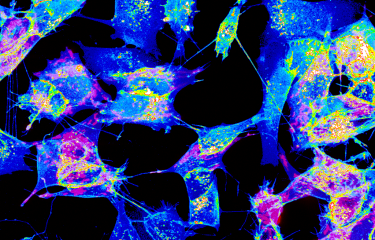Leptospirosis is an emerging bacterial disease that occurs worldwide. In two recent studies, the Institut Pasteur revealed several characteristics of the most virulent species, some of which are in circulation in France. The expert team at the Institut Pasteur also manages the National Reference Center (CNR) for Leptospirosis. Health authorities can seek advice from the CNR or request an investigation, for example if there are concerns about a bathing water location.
Leptospirosis is a bacterial disease transmitted by animals (a zoonosis). It is present worldwide, especially in tropical regions. The recent re-emergence of leptospirosis can be explained by sprawling urbanization (slums) and the increasing occurrence of extreme climate events that cause flooding. The main reservoirs are rodents, especially rats, which excrete the bacteria in their urine, thereby contaminating external environments such as fresh water and muddy ground. In humans, leptospirosis is often mild, but it can lead to kidney failure or even to death in 5 to 20% of cases.
See our fact sheet Leptospirosis: symptoms, treatment, prevention
"There are 600-700 cases of leptospirosis each year in mainland France," explains Mathieu Picardeau, Head of the Biology of Spirochetes Unit and the National Reference Center for Leptospirosis at the Institut Pasteur. The vast majority are indigenous cases, and most cases are observed over the summer period, as "more people are exposed to fresh water."
Identifying the characteristics of virulent Leptospira species
There are many different species of Leptospira bacteria in the environment, especially in fresh water (rivers, lakes, etc.), but only a few species are responsible for severe forms of leptospirosis in France and worldwide.
Mathieu Picardeau's team recently published two scientific papers, in collaboration with Fréderic Veyrier from INRS Armand-Frappier Santé Biotechnologie Research Center (Laval, Canada). The Institut Pasteur and the Canadian research center are both part of the Pasteur Network. In their publications, the scientists:
- Revealed the genomic and phenotypic characteristics of the most virulent species responsible for leptospirosis.
- Distinguished the most virulent species from others based on the expression of certain genes.
"We wanted to understand how these pathogenic species emerged, how they adapted to animal reservoirs over the course of their evolution, and why this small number of species are more virulent than others," continues the scientist. The studies show that the most virulent species differ from others in their ability to resist the oxidative stress imposed by the host and evade the immune response during infection.
The two recent publications follow on from a previous discovery of several novel Leptospira species isolated from the environment. The findings help improve our understanding of a relatively unknown and partly neglected disease.
Leptospirosis under surveillance
The expert team also manages the National Reference Center (CNR) for Leptospirosis at the Institut Pasteur. The CNR is on hand to respond to occasional requests from health authorities for expertise and advice, for example in the event of clustered cases. "We don't really know exactly how people catch leptospirosis in France or whether there are particular conditions that facilitate transmission," says Mathieu Picardeau. All we know is that leptospirosis is generally spread through exposure to water that has been contaminated with virulent bacteria, found in fresh water. That is why leptospirosis has been a notifiable disease in France since August 2023.
During the 2024 Olympic Games, reference health care establishments will be responsible for diagnosing any cases that emerge. But at the request of Santé publique France, the National Reference Center for Leptospirosis at the Institut Pasteur (like all the other CNRs) will be available "for occasional requests for expertise and advice, for example in the event of alerts or investigations."
Sources :
- Evolutionary insights into the emergence of virulent Leptospira spirochetes.
Giraud-Gatineau A, Nieves C, Harrison LB, Benaroudj N, Veyrier FJ, Picardeau PLoS Pathogens. 2024 Jul 17;20(7):e1012161.
doi: 10.1371/journal.ppat.1012161. - Inter-species Transcriptomic Analysis Reveals a Constitutive Adaptation Against Oxidative Stress for the Highly Virulent Leptospira Species.
Giraud-Gatineau A, Ayachit G, Nieves C, Dagbo KC, Bourhy K, Pulido F, Huete SG, Benaroudj N, Picardeau M, Veyrier FJ. Mol Biol Evol. 2024 Apr 2;41(4):msae066.
doi: 10.1093/molbev/msae066.
See also: Mathieu Picardeau: tackling the trio of water, rats and leptospirosis









